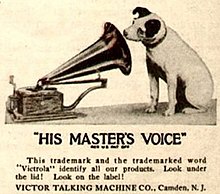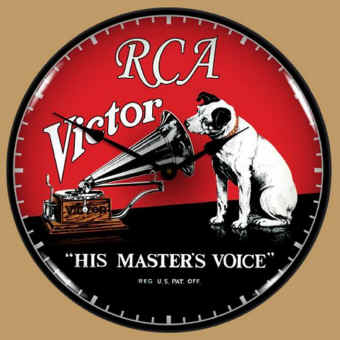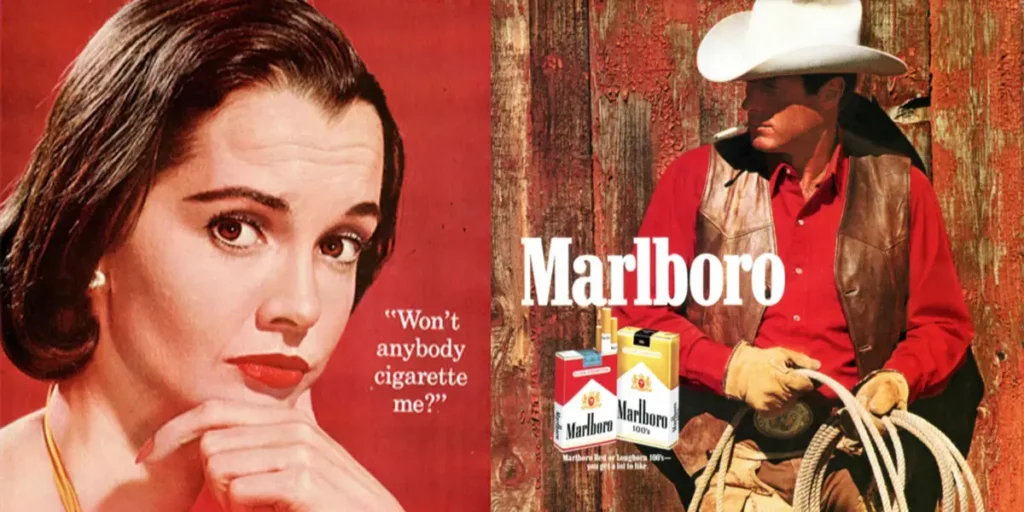Iconic Ads: Victor Talking Company – His Master’s Voice

It was Victor Talking Company who made famous the Nipper and His Masters Voice Image/ logo by using it in all communication
The Origin
A small painting by English artist Francis Barraud of a mixed breed dog gazing into the brass horn of a phonograph became one of the most iconic promotional images in American business history.
Nipper was born in 1884 in Bristol, England, and was most likely a mix of Russell Terrier and Bull Terrier. He got his moniker because he liked to nip the backs of his guests legs.
Nipper used to stay in the Prince’s Theatre with his owner, Mark Henry Barraud, who worked as a scenery designer. Barraud’s brothers Philip and Francis took care of the dog when he died in 1887. Nipper died of natural causes in 1895 and was buried in a tiny park on Clarence Street in Kingston upon Thames. A Lloyds Bank branch was built on the site. A brass plaque on the bank’s wall, immediately inside the entrance, recalls the terrier that lays beneath the structure.
Francis Barraud, Nipper’s last owner and brother of his first owner, painted a portrait of Nipper listening intently to a wind-up Edison-Bell cylinder phonograph in 1898. It occurred to him to portray his dog listening to the phonograph with an intelligent but perplexed expression. He titled the painting “His Master’s Voice.” He had a phonograph and was always amused by how perplexed his dog was when he tried to figure out where the voice came from.
(The narrative of Nipper being intrigued by noises emanating from the then-new device is true. It has been debunked that he was listening to the voice of his deceased owner on a gramophone.)
The Copyright
Francis Barraud filed a copyright application for the original picture in early 1899, with the descriptive working title “Dog looking at and listening to a Phonograph.”
He offered it to James E. Hough of the Edison-Bell Company in New Jersey, thinking it might be useful. But Hough rejected it, saying, “Dogs don’t listen to phonographs.”
Barraud went to The Gramophone Company’s Maiden Lane offices on May 31, 1899, to borrow a brass trumpet to replace the painting’s original black horn. Owner manager William Barry Owen offered to buy the artwork if the artist replaced the equipment with a Berliner disc phonograph. The Gramophone Company bought the tagline “His Master’s Voice” and Barraud’s artwork for £100 or $125 (approximately to £10,628 or $13,254 today) — half for the copyright and half for the painting itself.
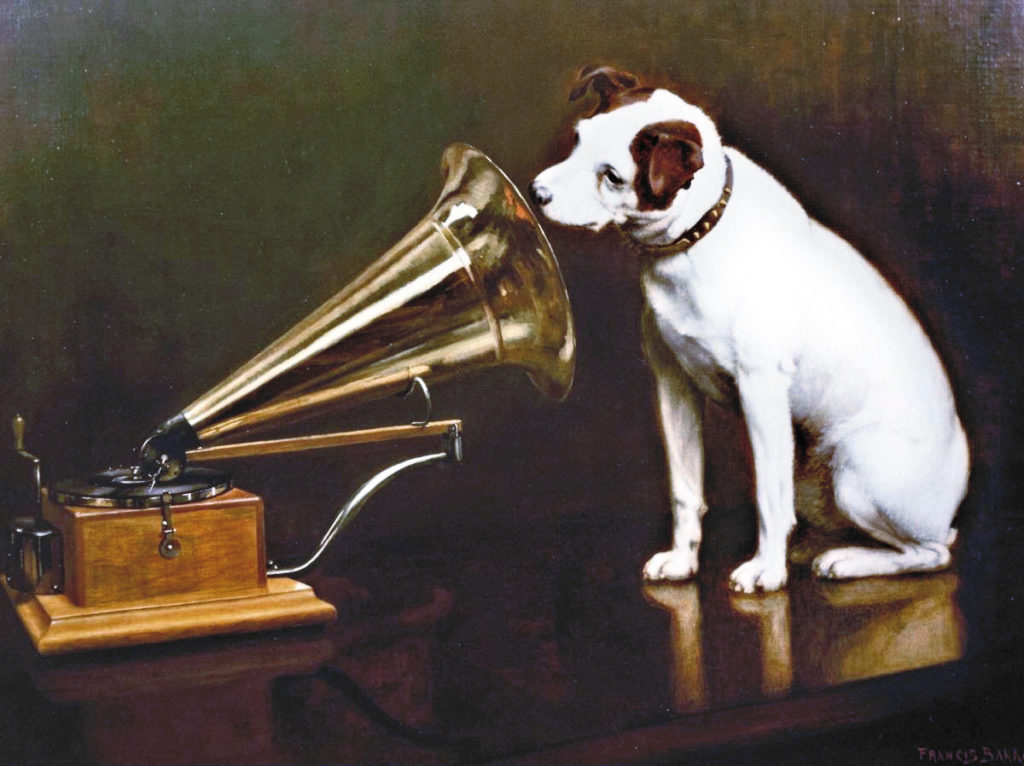
The image appeared in the company’s catalogue for the first time in December 1899.
As the trademark grew in popularity, the artist was commissioned to create numerous more versions for various corporate uses. Emile Berliner, the inventor of the Gramophone, Owen’s American partner, had seen the painting in London and took a US copyright on on July 10, 1900. The painting was adopted as a trademark by Berliner’s business partner, Eldridge R. Johnson of the newly formed Consolidated Talking Machine Company, which was reorganized as the Victor Talking Machine Company in 1901.
The Usage
In the autumn of 1900, Johnson featured the dog-and-gramophone image in newspaper advertisements for Consolidated. Most Victor recordings had a reduced illustration of the motif on their labels starting in February 1902. The Victor Company utilized the trademark more than its UK affiliate, with it appearing on nearly all Victor items. Buyers were instructed to “look for the dog” in newspaper and magazine adverts. Victor erected a fifty-foot-square illuminated Nipper advertising billboard near the Metropolitan Opera House on Broadway. Stained-glass windows of the emblem in the tower of Building 17 of its office in Camden, New Jersey, in 1915. The building and windows are still standing today. They have long been a symbol of both RCA Victor and Camden’s industrial past.
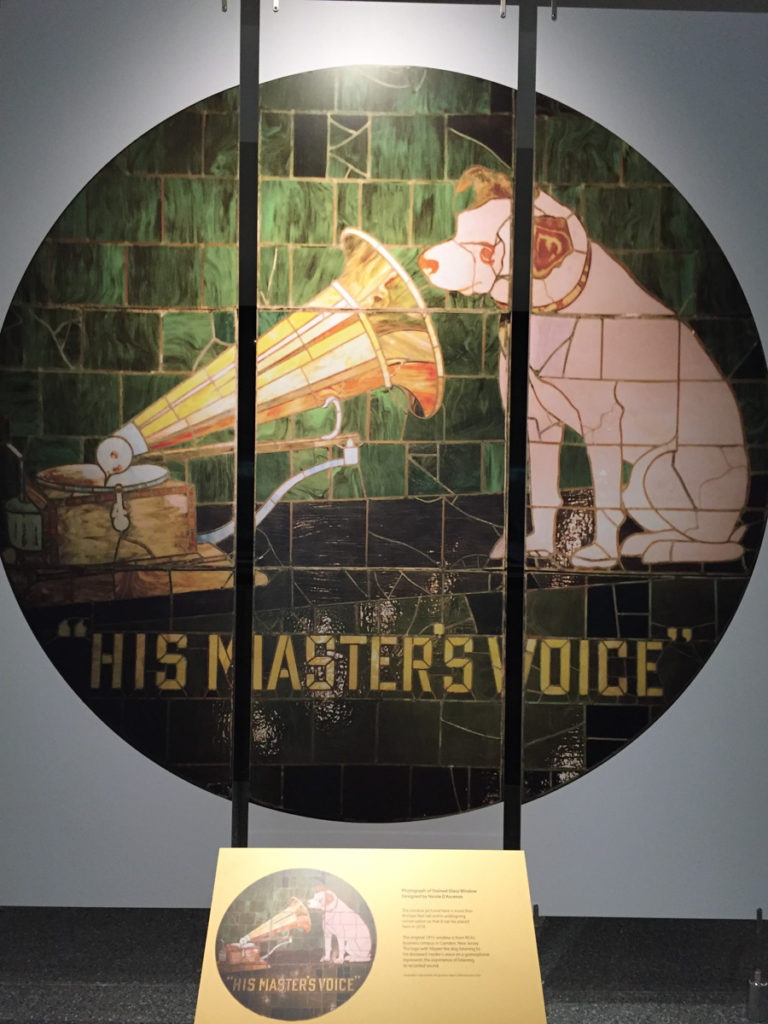
The Gramophone Company did not use the dog on its record labels in British Commonwealth nations until 1909. It replaced the Recording Angel logo with Nipper in the upper half of the record labels in 1910.
The corporation was not known as HMV or His Master’s Voice. But due to its popularity on record labels, it quickly became known as such. Record collectors refer to records released by the business before February 1908 as “G&Ts.” Those released after that date are commonly referred to as “HMV” records.
